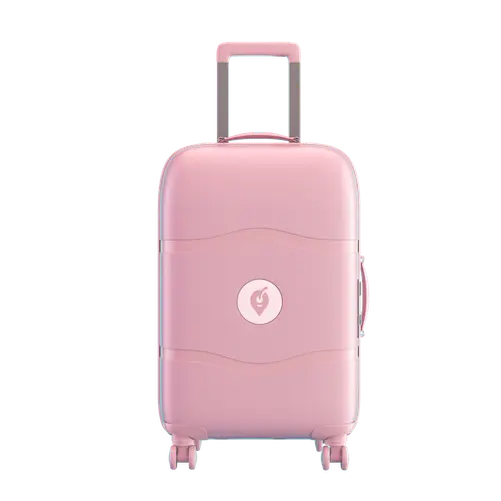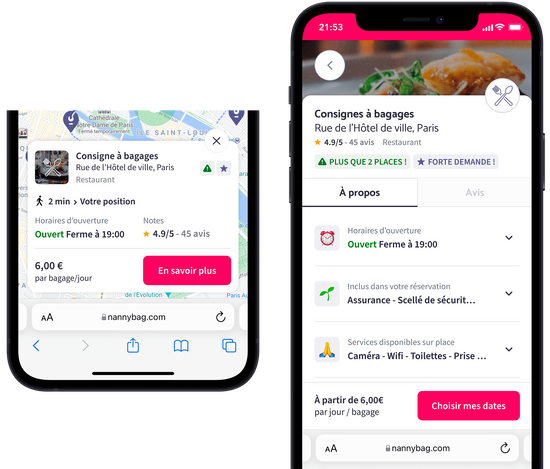FULL Tokyo Railway Network Guide: Prices, Trains, Tap-and-go

Navigating the Tokyo railway network can seem overwhelming, but with this full transport guide, you’ll be zipping through the city like a local in no time. Tokyo's public transport systems, including JR East lines, Tokyo Metro, and Toei Subway lines, are renowned for their efficiency, coverage, and convenience. With a Tokyo subway ticket, you can access a comprehensive network that offers a seamless travel experience across urban and metropolitan areas.
These transport options connect many destinations within the city, ensuring that you can easily and efficiently navigate Tokyo's bustling streets and quiet neighborhoods using the extensive JR East network, the Tokyo Metro, or the Toei Subway lines.
Traveling through Tokyo's railway network is much easier without heavy luggage. Use the luggage storage in Tokyo Narita to store your bags safely and easily explore the city.
How Much is Public Transport in Tokyo?
Understanding Ticket Prices
In Tokyo, the cost of public transport is calculated based on the distance traveled. For short distances within central Tokyo, train and subway fares are quite reasonable, making it an accessible option for daily commutes or tourist excursions. A single journey can cost anywhere from a few hundred yen for short trips to slightly more for longer distances, covering various urban areas and connecting major districts and attractions.
Day passes are a practical and cost-effective choice for frequent travelers or tourists exploring the city. These passes offer unlimited travel within a specified duration - usually a day - and can be used across multiple train and subway lines. Some passes even include discounts on entry fees to certain tourist attractions. Day passes are ideal for those who plan to visit multiple locations in a day, as they eliminate the need to purchase individual tickets for each journey.
The Japan Rail Pass
The Japan Rail Pass is an incredibly valuable tool for tourists planning to travel extensively across Japan, not just within Tokyo. This pass allows unlimited travel on most Japan Railways (JR) lines nationwide, including Shinkansen (bullet trains), limited express trains, and local JR trains. It's particularly useful for those traveling from Tokyo to other major cities or scenic destinations across Japan.
In Tokyo, the pass includes access to the JR Yamanote Line, one of the most convenient ways to get around the city. The Yamanote Line loops through key districts such as Shibuya, Shinjuku, Ueno, and Ikebukuro, connecting major shopping, business, and entertainment areas. It's an ideal way for tourists to navigate the sprawling metropolis without the hassle of buying individual tickets for each journey.
The Japan Rail Pass comes in different durations, typically 7 to 21 days, and must be purchased outside of Japan before your trip. Its cost-effectiveness is unparalleled, especially for those planning to explore various regions of Japan. It simplifies travel and can lead to significant savings compared to purchasing individual train tickets.

Tokyo Tap-and-Go: The IC Card Revolution
Suica and Pasmo Cards
Suica and Pasmo cards are rechargeable smart cards that have simplified traveling in and around Tokyo. They operate on a simple tap-and-go system, allowing users to breeze through ticket gates with just a quick touch on the card reader. These cards eliminate the need to buy individual tickets for each journey, saving time and hassle, especially during rush hours.
Purchasing these cards is straightforward. They are available at ticket machines and offices at most train and subway stations across Tokyo. A small deposit is required when purchasing the card, which can be refunded upon returning it, making it a convenient option for tourists. These cards can be easily recharged at train stations, most convenience stores, and even some vending machines, ensuring you're never caught without enough fare.
Versatility and Convenience
The utility of Suica and Pasmo cards extends beyond just train and subway travel. They are accepted on many bus routes within the city, streamlining your transit experience as you switch between different modes of transportation. This interoperability makes them an essential travel tool within Tokyo's public transport network.
Moreover, these IC cards are not limited to transport. They can be used for small purchases, such as buying drinks from vending machines, paying for items at convenience stores, and even at certain restaurants. This multifunctionality enhances convenience, especially for tourists who prefer not to carry a lot of cash.
Navigating the Tokyo Railway Network
JR Lines and Tokyo Subway
Tokyo's railway network, a marvel of urban planning and efficiency, is anchored by the JR (Japan Railways) lines and the extensive Tokyo subway system. The JR Yamanote Line, one of the most prominent JR lines, forms a loop that connects major districts in central Tokyo, such as Shibuya, Shinjuku, Ikebukuro, and Ueno. This line is essential for navigating the city's heart, providing easy access to many of Tokyo's key attractions and business centers.
In addition to the JR lines, the Tokyo subway system, comprising the Toei Subway and Tokyo Metro lines, further expands the reach within the metropolitan area. These subway lines traverse areas not covered by the JR lines, offering more granular access to different neighborhoods. The subway network is known for its punctuality, cleanliness, and frequency of service, making it a reliable option for daily commutes and tourist explorations.
Shinkansen Bullet Train
When it comes to traveling beyond Tokyo, the Shinkansen bullet train is unparalleled in speed and comfort. These high-speed trains are a testament to Japan's technological advancements in railway transport. The Shinkansen lines connect Tokyo to other major destinations like Kyoto, Osaka, Hiroshima, and more, significantly reducing travel time. For instance, a trip from Tokyo to Kyoto, which would take several hours by car, can be accomplished in about 2-3 hours on the Shinkansen.
The experience of traveling on a Shinkansen is unique, with features like spacious seating, large windows, and smooth rides at speeds of up to 320 km/h (200 mph). It's not just a mode of transport; it's an integral part of the Japanese travel experience.

Day Passes and Special Tickets
For tourists and day-trippers, day passes, and special tickets can greatly enhance the experience of exploring Tokyo. These passes offer unlimited travel on various combinations of trains and subways within a set period, usually ranging from a single day to several days. They are perfect for those planning to visit multiple attractions across the city, offering convenience and significant savings compared to purchasing individual tickets.
Day passes are available for specific lines or entire networks; some even include discounts and special offers for tourist attractions. For example, the Tokyo Metro 24-hour Ticket allows unlimited travel on all Tokyo Metro lines, making it an ideal option for intensive city exploration.
A Guide to Tokyo's Train Stations
Central Tokyo Hubs
Train stations in central Tokyo are more than just transit points; they are bustling hubs with shops, restaurants, and services. Stations like Shibuya and Shinjuku are destinations in themselves, reflecting the city's vibrant culture.
Navigating Ticket Gates and Platforms
Understanding how to navigate ticket gates and platforms is essential for a smooth journey. Information is available in English at most stations, and station staff are generally helpful and accommodating.
The Tokyo railway network is a marvel of public transport, offering efficient, reliable, and user-friendly services. With this guide, you'll have all the information needed to navigate the trains and subways of Tokyo confidently. So grab your IC card, a sense of adventure, and explore all Tokyo has to offer!

Say hello to exploring and goodbye to heavy bags!
What if you could enjoy every minute in the city without the burden of your bags?
- Safe luggage storage for a flat daily price of ¥750/luggage item
- Included luggage protection of up to €10000 in case of breakage, loss or theft
